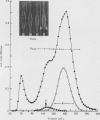Abstract
1. Homologous and heterologous colostral immune globulins and human serum albumin were fed to new-born pigs and an attempt was made to estimate the amounts appearing subsequently in serum.
2. All three proteins, fed separately in large amounts to different pigs, appeared in the serum in low concentration about 45 min after feeding, and then rose quickly to a high level. No difference could be detected between the amounts absorbed when equal amounts had been fed but there was a wide variation between pigs. Previous dialysis of pig colostrum against bicarbonate saline did not affect the rate or amount of pig immune globulin absorbed after feeding.
3. When pig and bovine colostral IgG were fed together at equal concentrations in bovine colostrum, the absorption of pig IgG was greater than that of bovine IgG. Human serum albumin, added to bovine colostral IgG in bovine colostrum, was absorbed readily and this did not interfere significantly with the absorption of bovine colostral IgG.
4. The efficiency with which the pig intestine absorbed bovine colostral IgG depended on the dose and/or concentration fed, increasing as the dose fed was increased to 2 g and remaining constant for higher doses.
5. Some of the absorbed immune globulin was shown to exist in a partly degraded form.
6. The process of protein transfer across the intestine of the new-born pig may select, to a limited degree, between different proteins, but the digestion of protein shown to take place and the large variation between individual pigs makes interpretation of these results uncertain.
Full text
PDF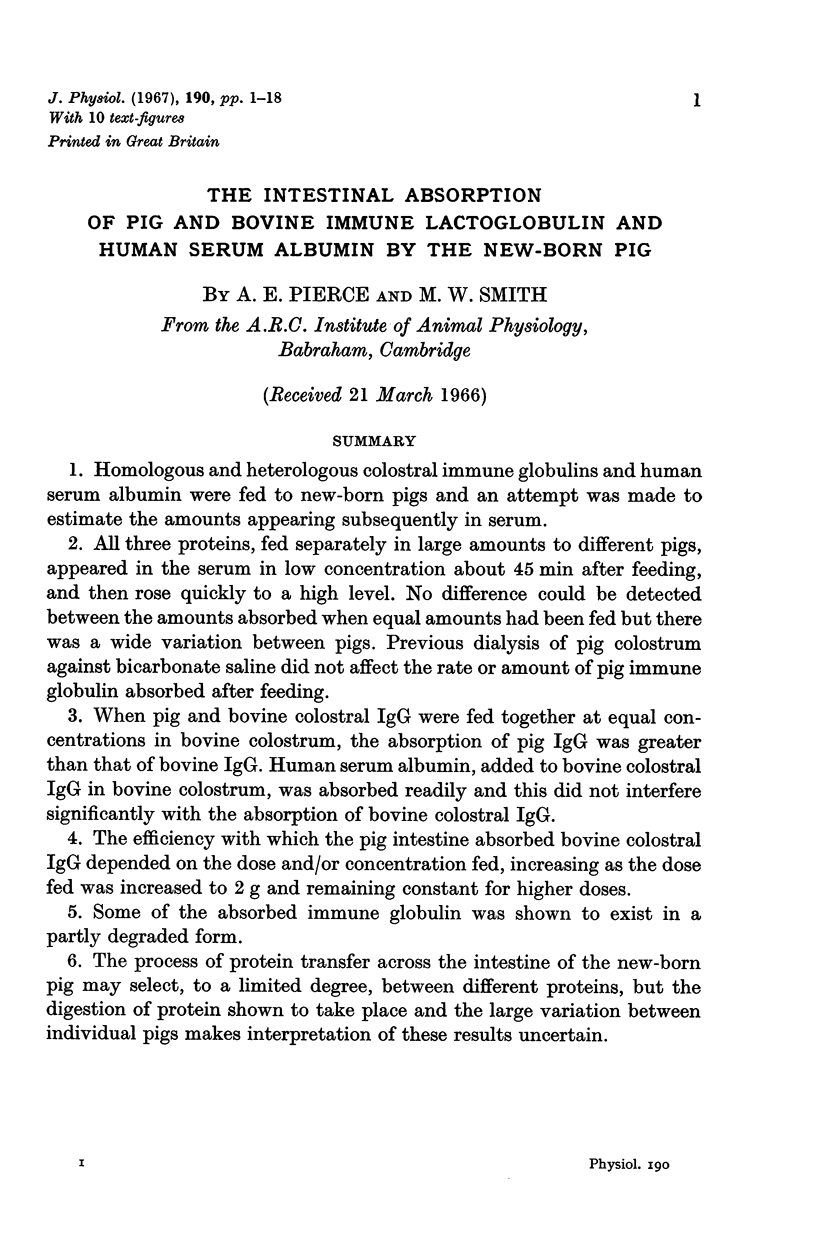
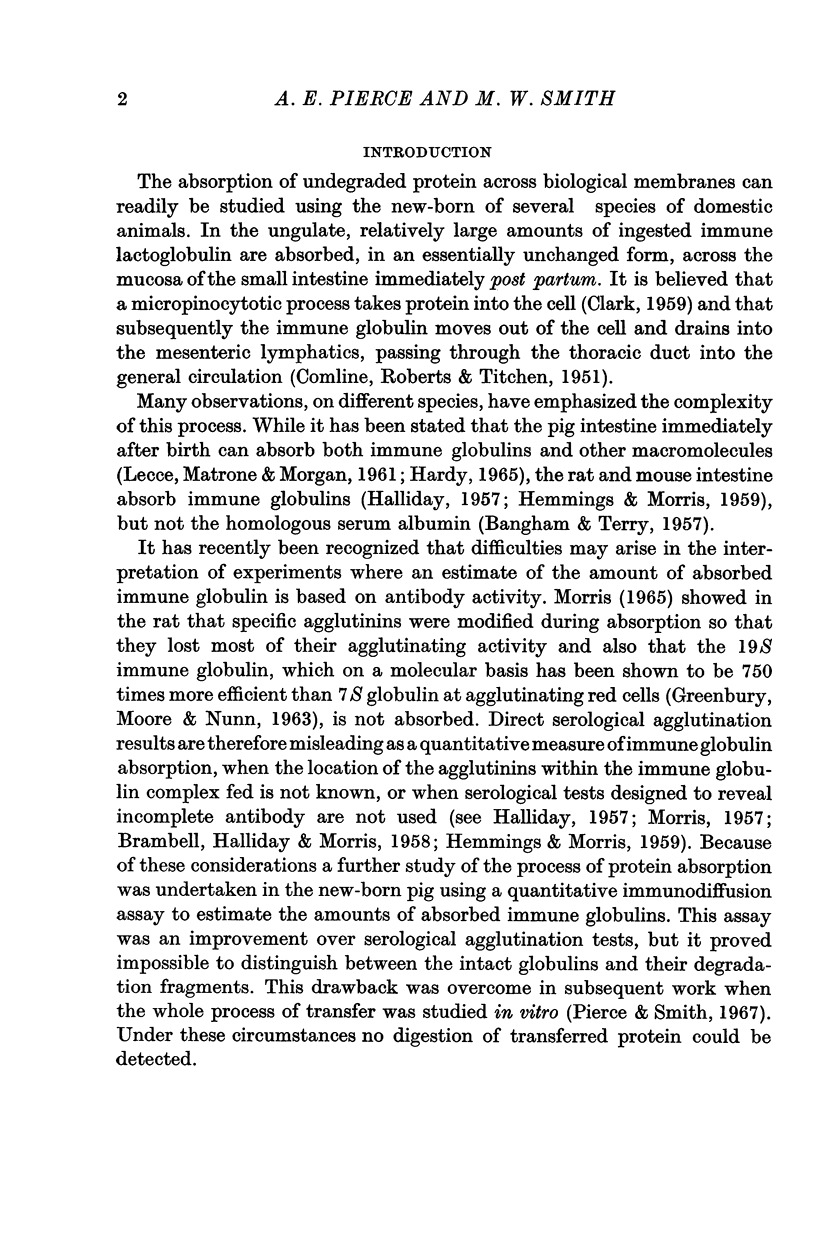
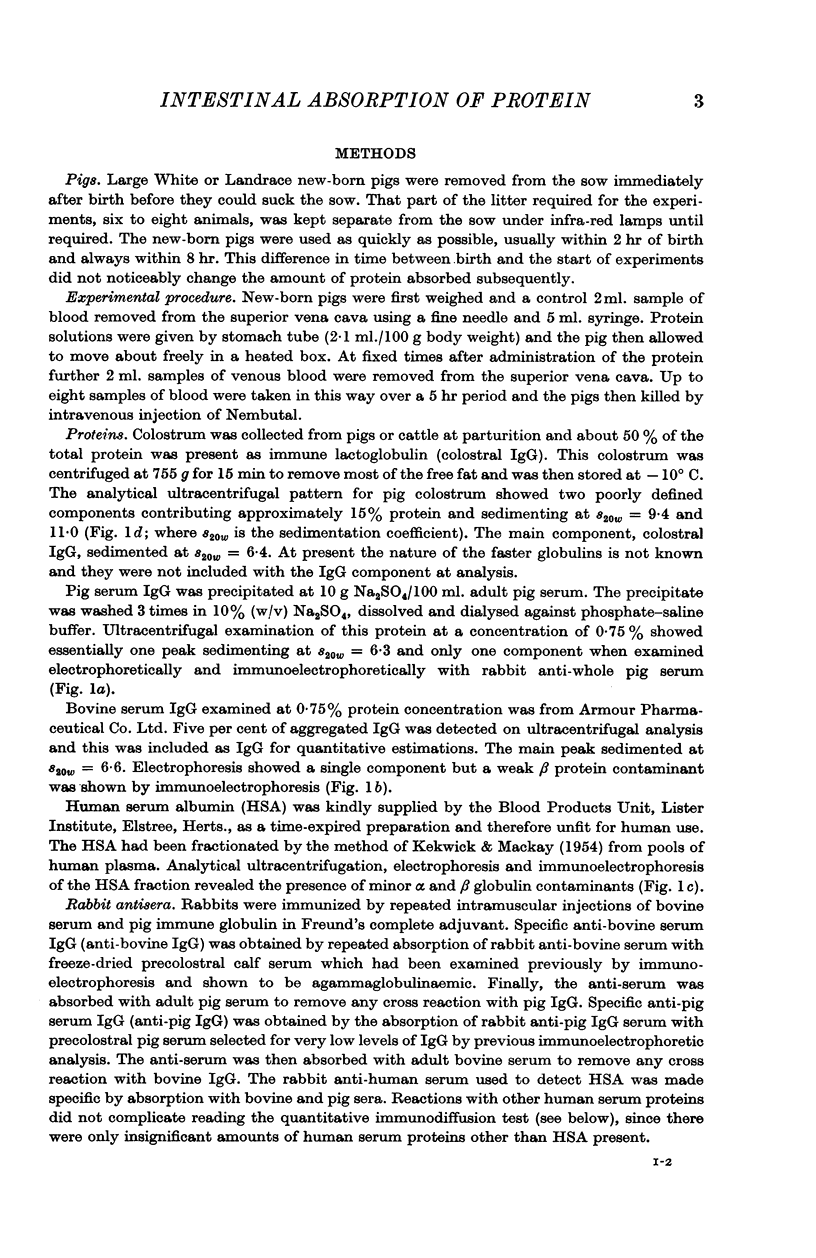
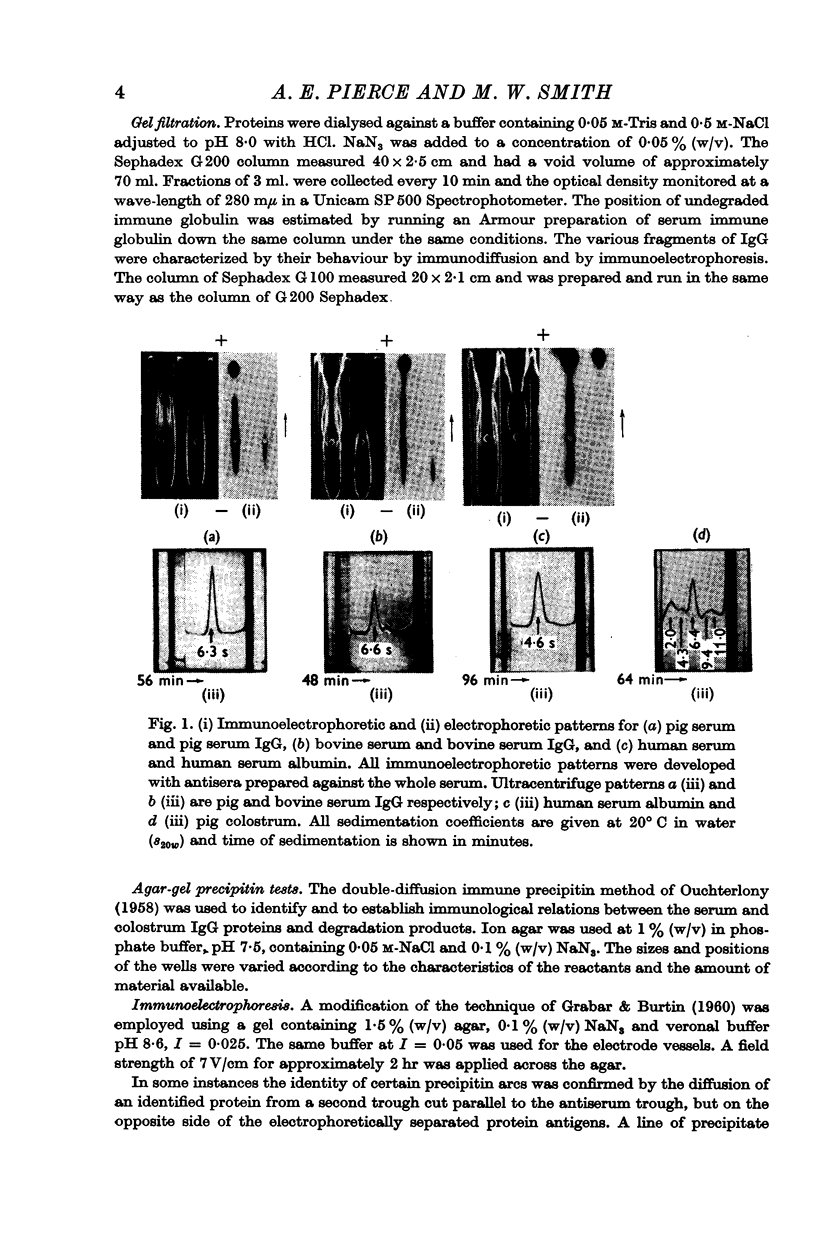
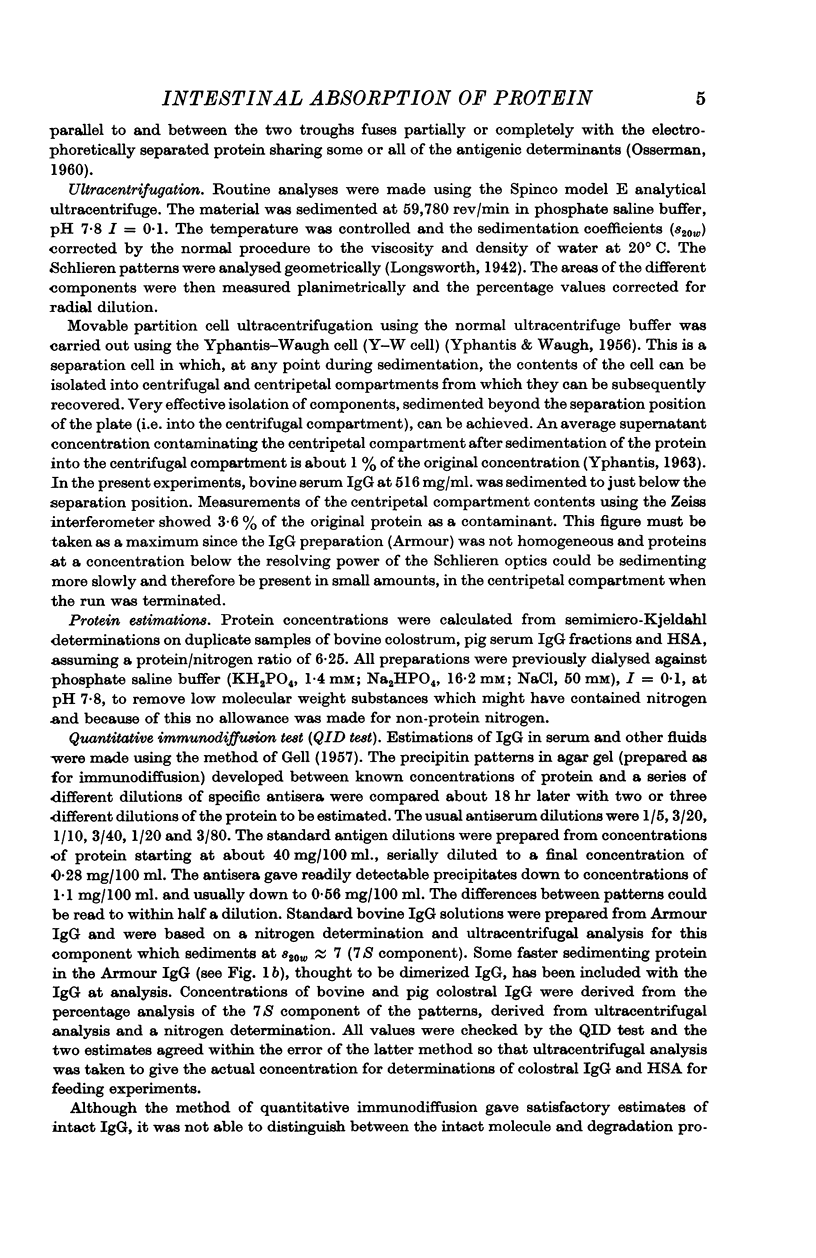
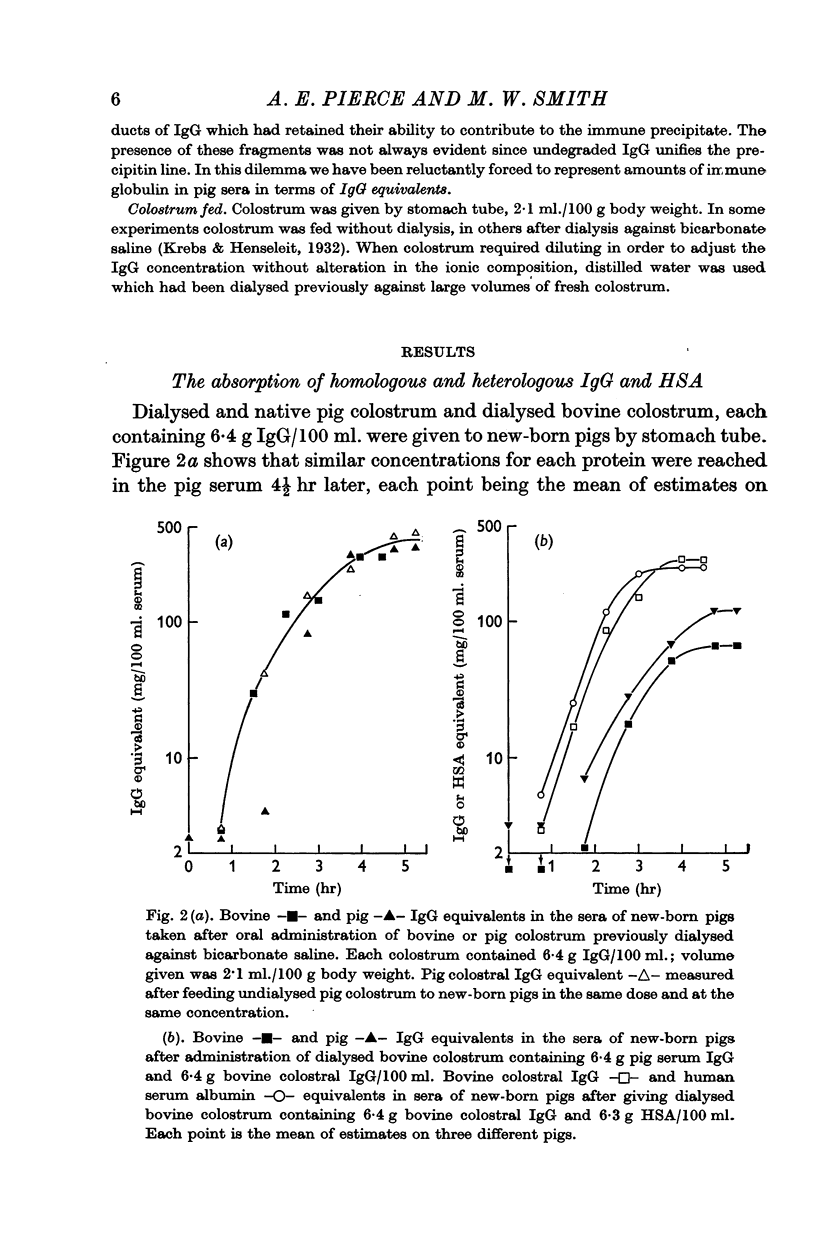
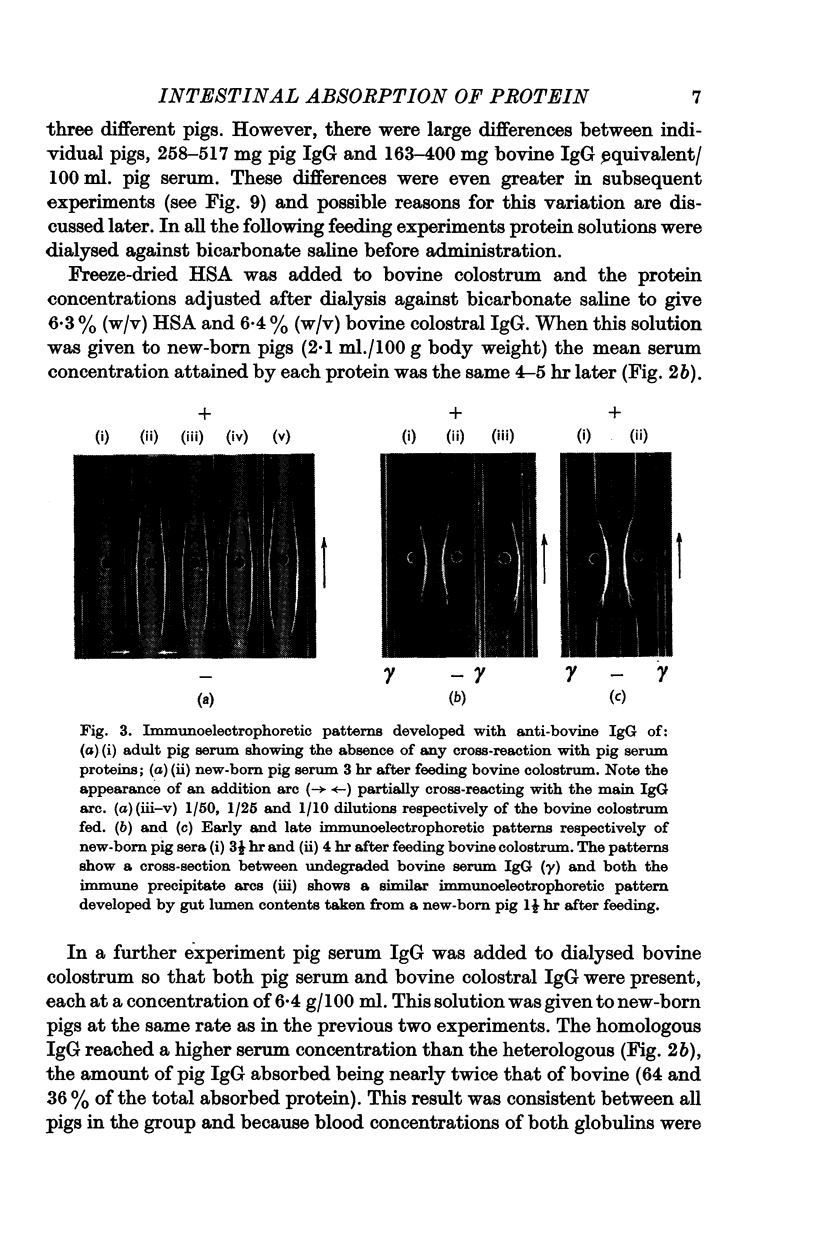
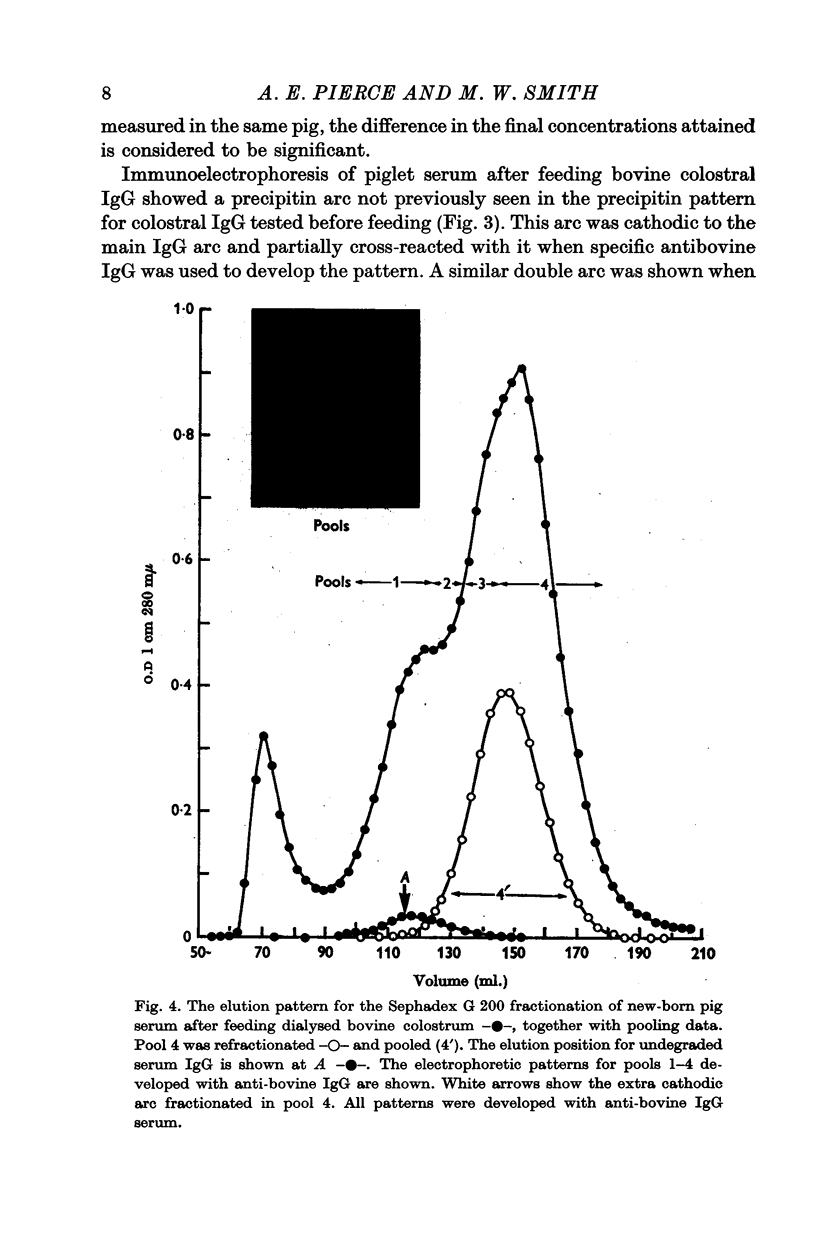
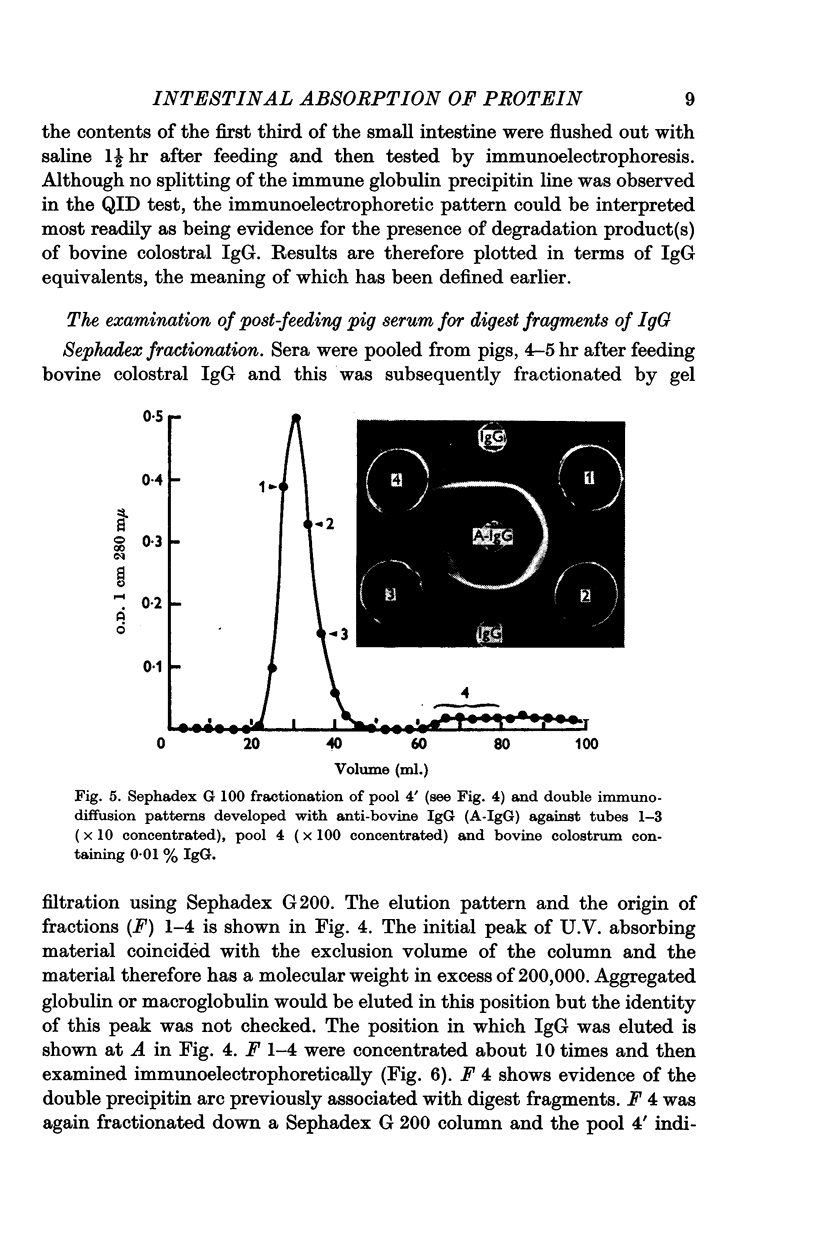
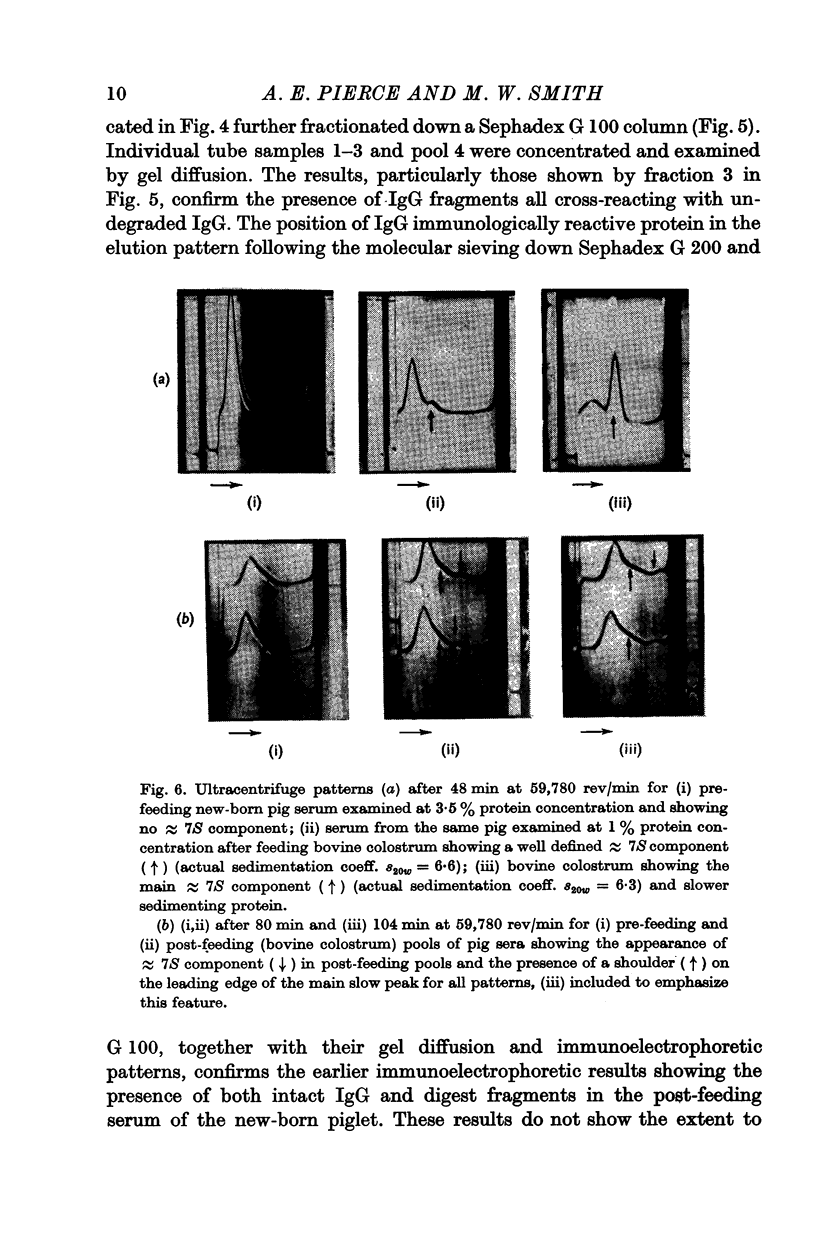
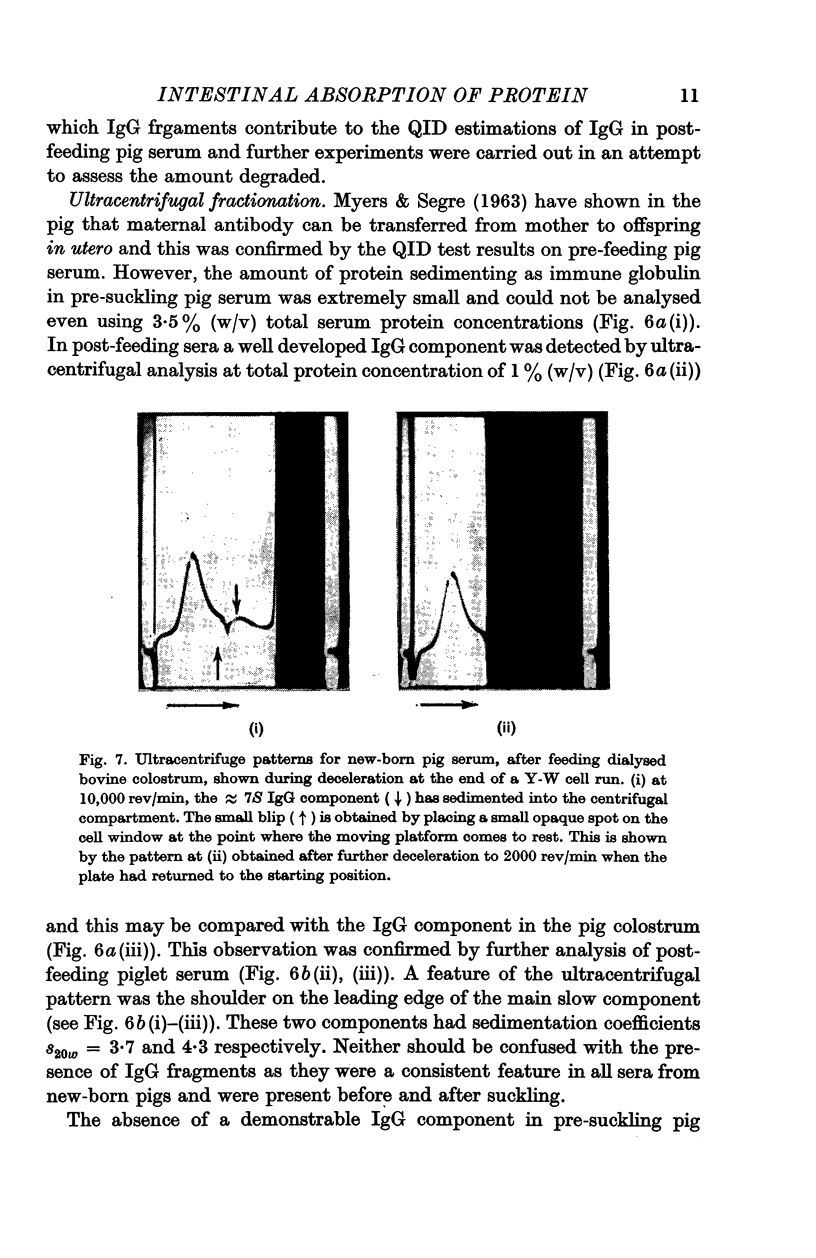
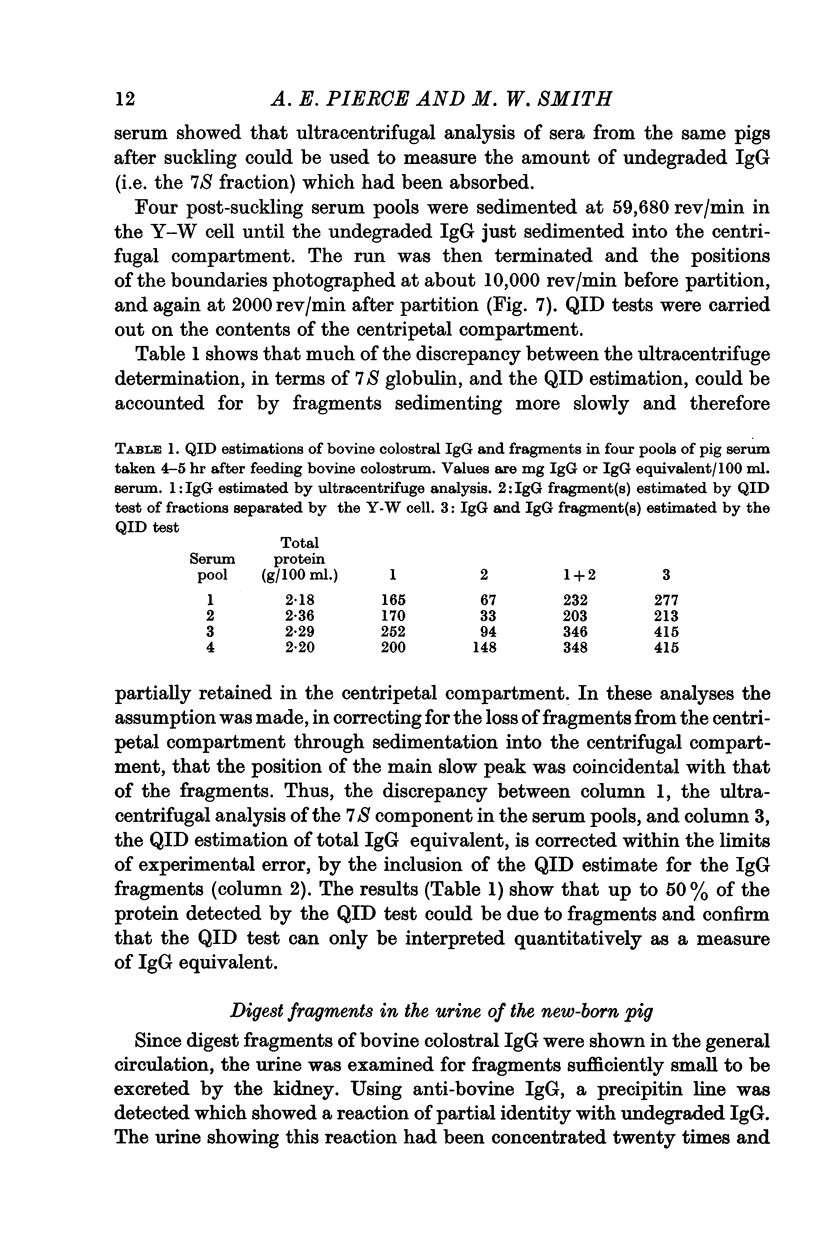
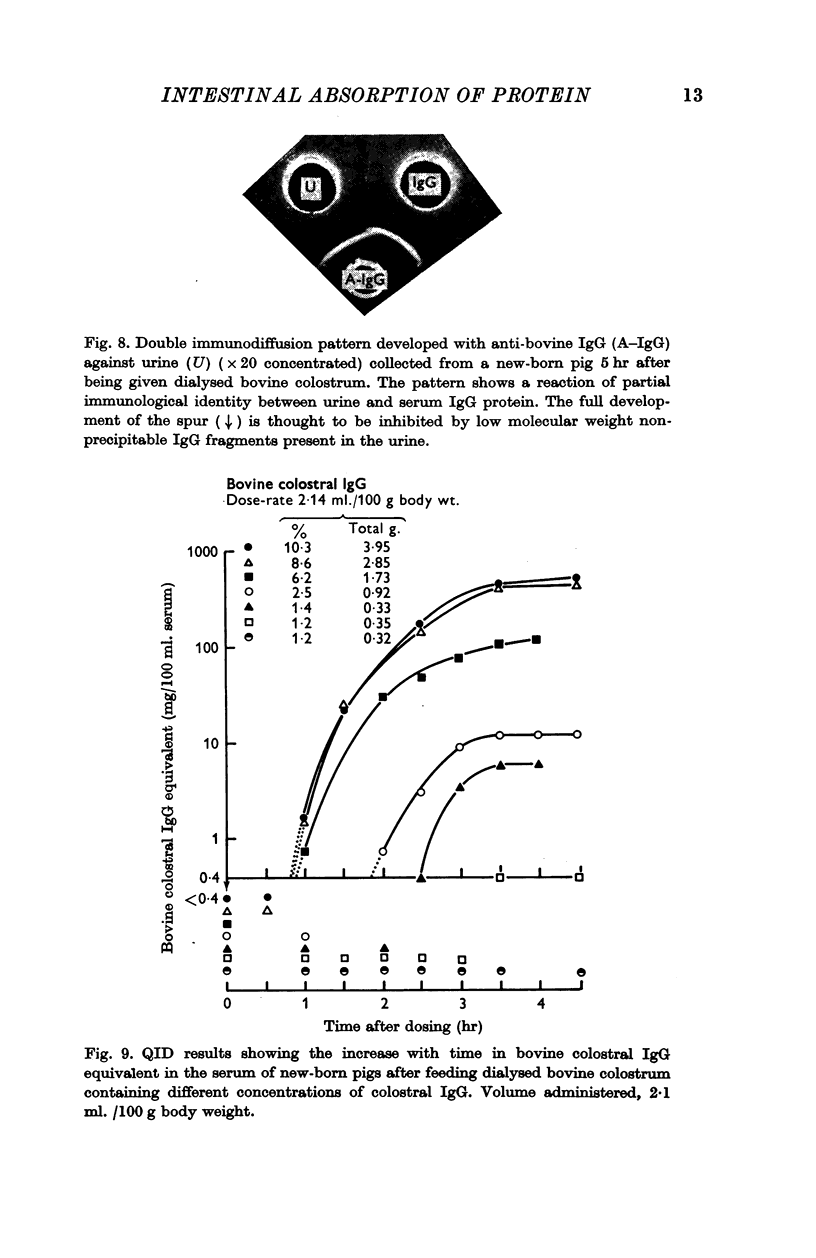
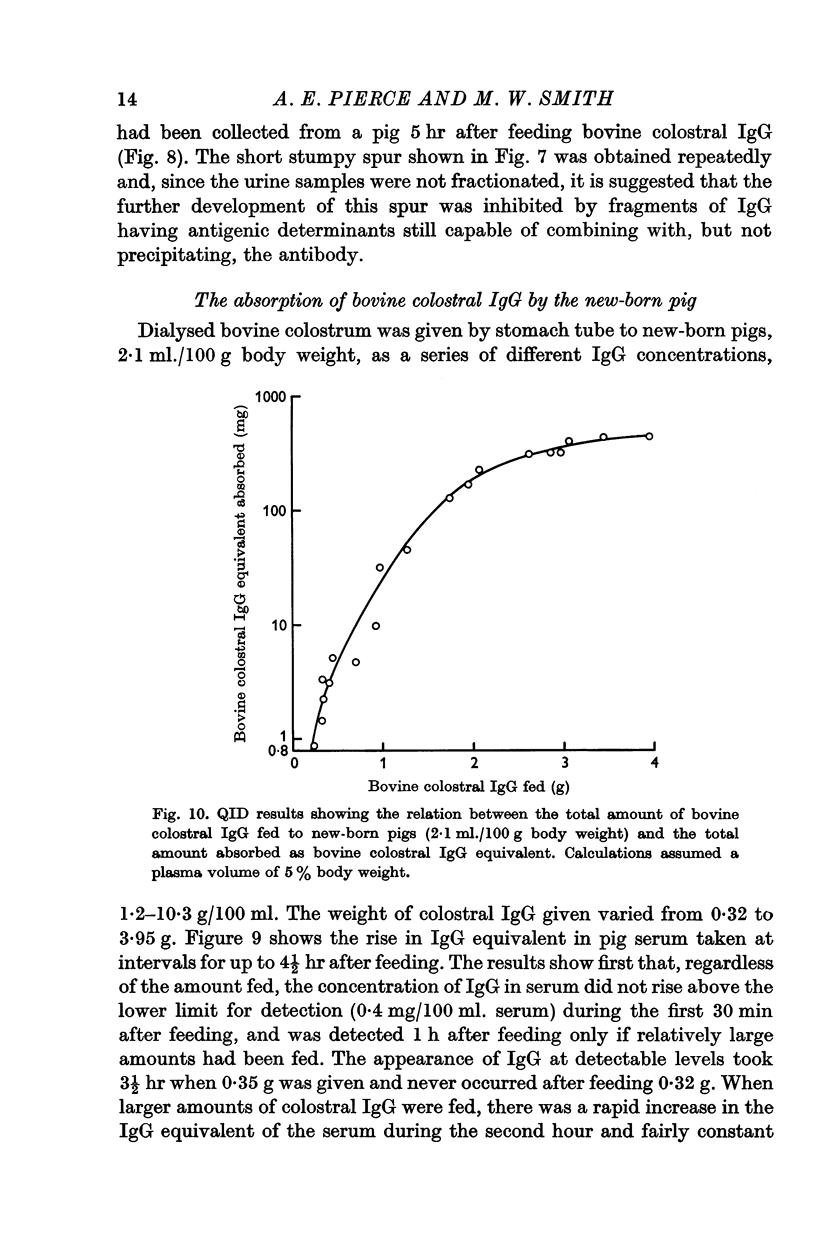
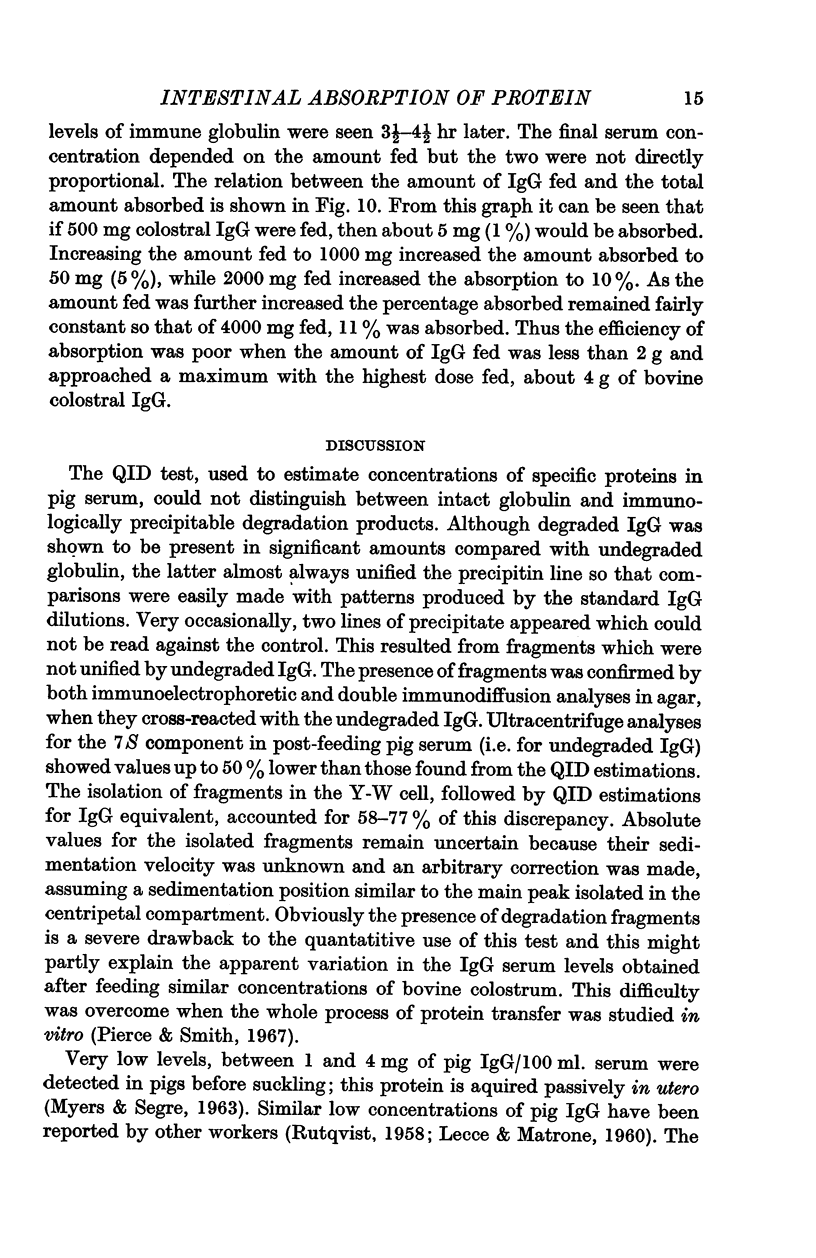
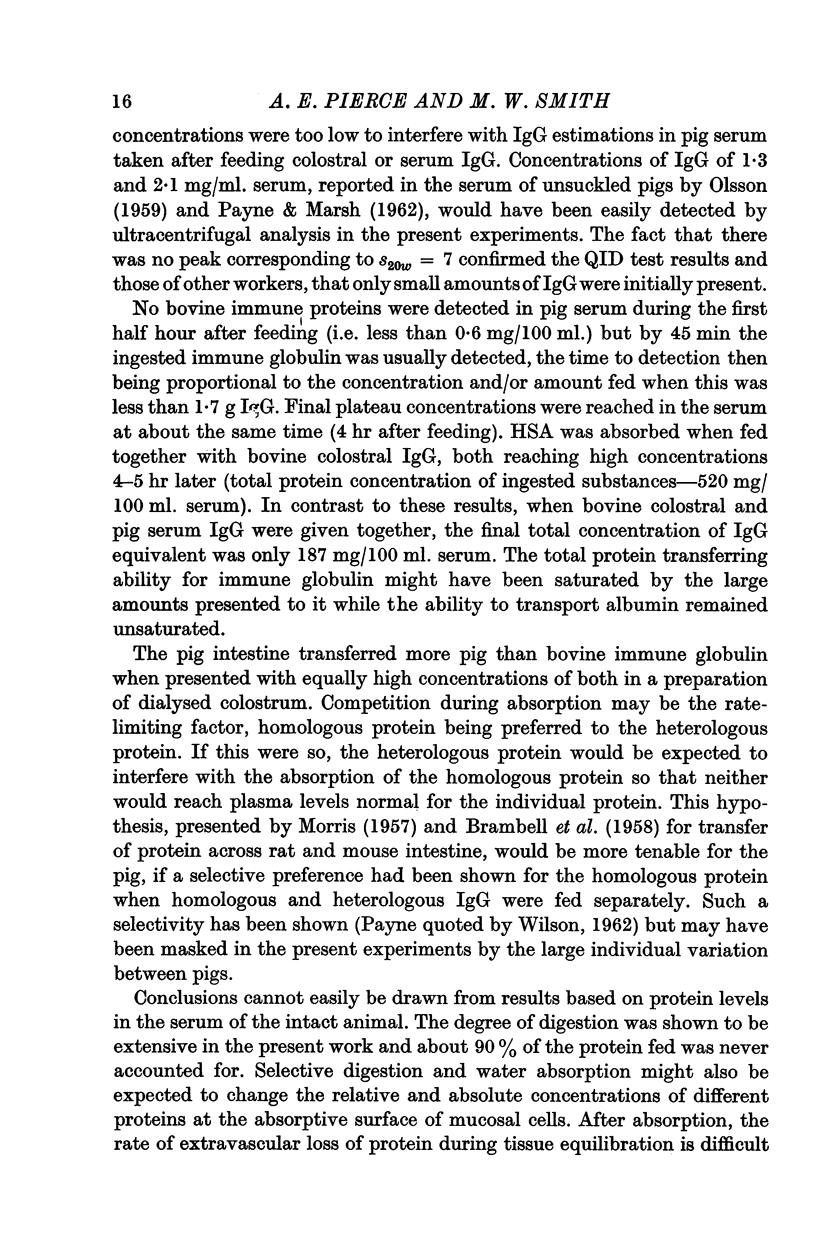
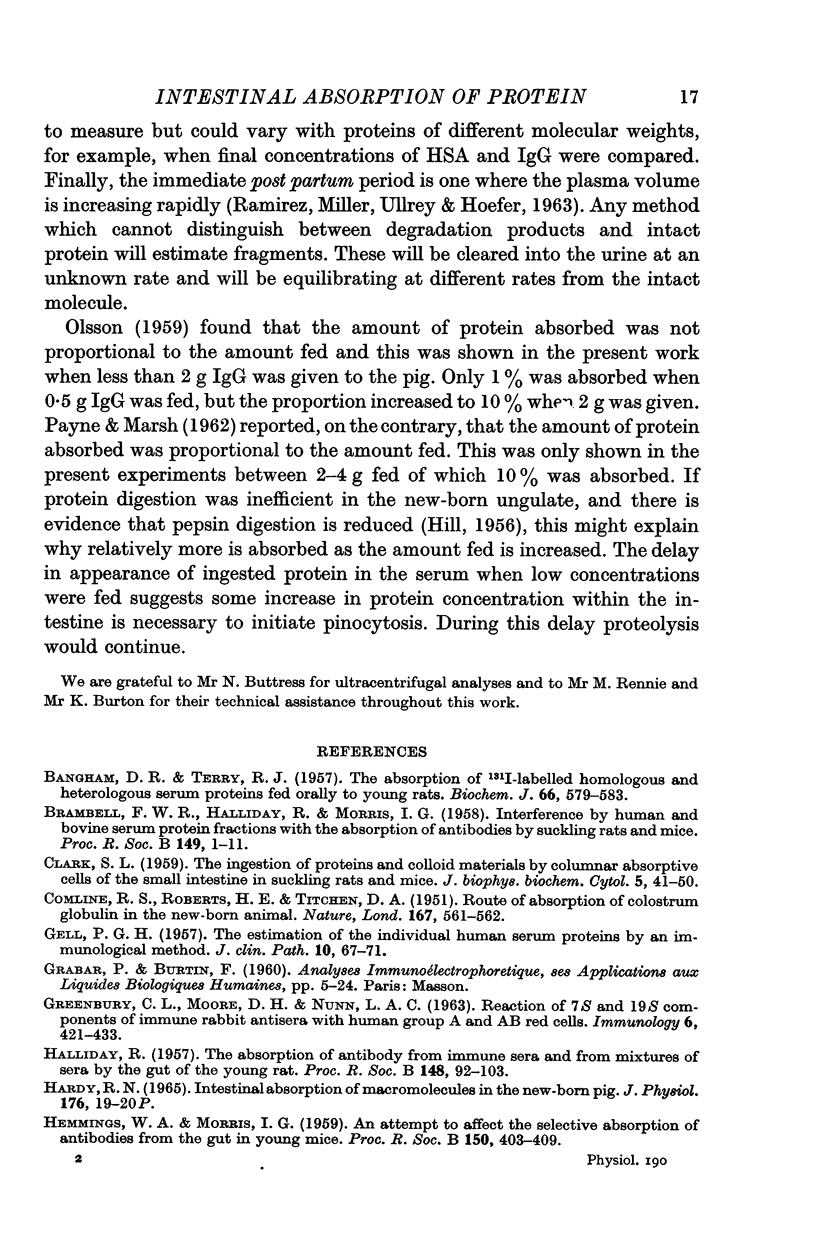
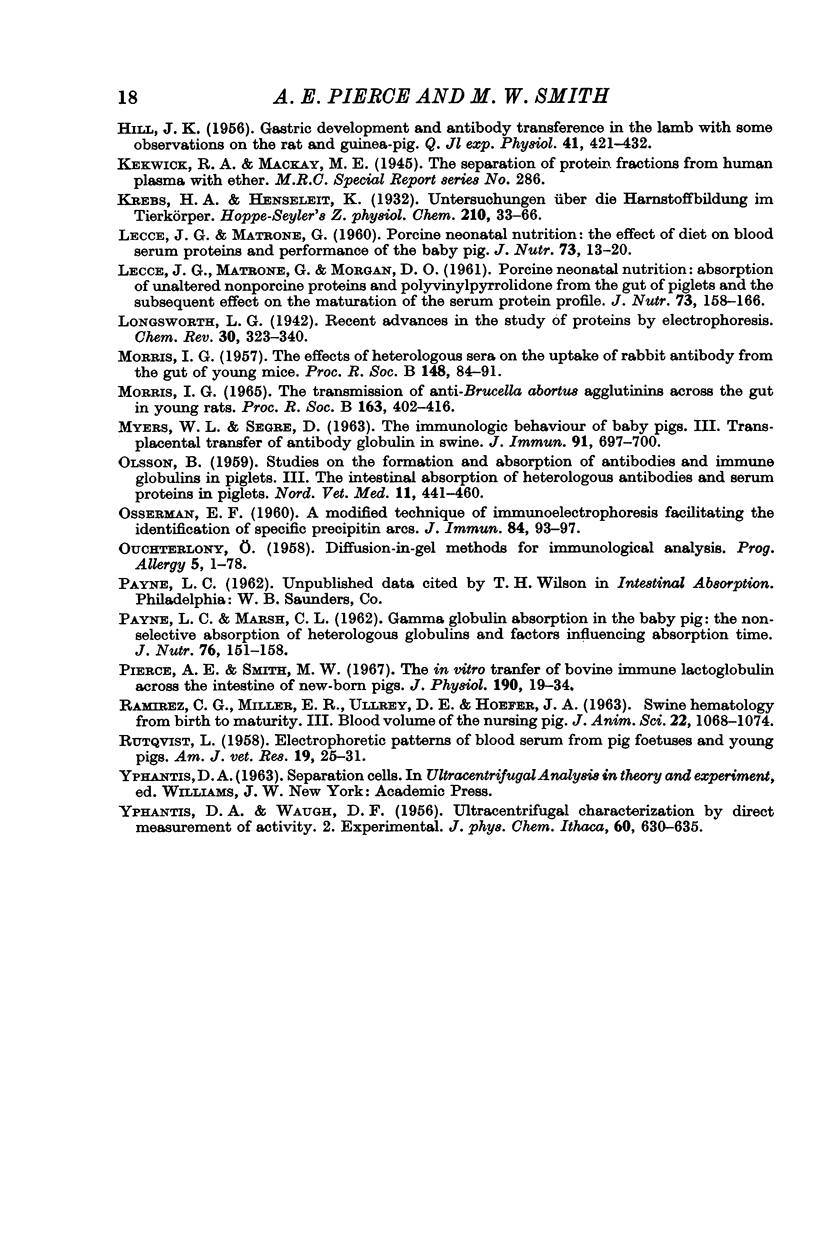
Images in this article
Selected References
These references are in PubMed. This may not be the complete list of references from this article.
- BANGHAM D. R., TERRY R. J. The absorption of 131I-labelled homologous and heterologous serum proteins fed orally to young rats. Biochem J. 1957 Aug;66(4):579–583. doi: 10.1042/bj0660579. [DOI] [PMC free article] [PubMed] [Google Scholar]
- BRAMBELL F. W., HALLIDAY R., MORRIS I. G. Interference by human and bovine serum and serum protein fractions with the absorption of antibodies by suckling rats and mice. Proc R Soc Lond B Biol Sci. 1958 Jul 1;149(934):1–11. doi: 10.1098/rspb.1958.0046. [DOI] [PubMed] [Google Scholar]
- CLARK S. L., Jr The ingestion of proteins and colloidal materials by columnar absorptive cells of the small intestine in suckling rats and mice. J Biophys Biochem Cytol. 1959 Jan 25;5(1):41–50. doi: 10.1083/jcb.5.1.41. [DOI] [PMC free article] [PubMed] [Google Scholar]
- COMLINE R. S., ROBERTS H. E., TITCHEN D. A. Route of absorption of colostrum globulin in the newborn animal. Nature. 1951 Apr 7;167(4249):561–562. doi: 10.1038/167561a0. [DOI] [PubMed] [Google Scholar]
- GELL P. G. The estimation of the individual human serum proteins by an immunological method. J Clin Pathol. 1957 Feb;10(1):67–71. doi: 10.1136/jcp.10.1.67. [DOI] [PMC free article] [PubMed] [Google Scholar]
- GREENBURY C. L., MOORE D. H., NUNN L. A. REACTION OF 7S AND 19S COMPONENTS OF IMMUNE RABBIT ANTISERA WITH HUMAN GROUP A AND AB RED CELLS. Immunology. 1963 Sep;6:421–433. [PMC free article] [PubMed] [Google Scholar]
- HALLIDAY R. The absorption of antibody from immune sera and from mixtures of sera by the gut of the young rat. Proc R Soc Lond B Biol Sci. 1958 Jan 1;148(930):92–103. doi: 10.1098/rspb.1958.0008. [DOI] [PubMed] [Google Scholar]
- HEMMINGS W. A., MORRIS I. G. An attempt to affect the selective absorption of antibodies from the gut in young mice. Proc R Soc Lond B Biol Sci. 1959 Apr 21;150(940):403–409. doi: 10.1098/rspb.1959.0030. [DOI] [PubMed] [Google Scholar]
- LECCE J. G., MATRONE G. Porcine neonatal nutrition: the effect of diet on blood serum proteins and performance of the baby pig. J Nutr. 1960 Jan;70:13–20. doi: 10.1093/jn/70.1.13. [DOI] [PubMed] [Google Scholar]
- MORRIS I. G. The effects of heterologous sera on the uptake of rabbit antibody from the gut of young mice. Proc R Soc Lond B Biol Sci. 1958 Jan 1;148(930):84–91. doi: 10.1098/rspb.1958.0007. [DOI] [PubMed] [Google Scholar]
- MYERS W. L., SEGRE D. THE IMMUNOLOGIC BEHAVIOR OF BABY PIGS. III. TRANSPLACENTAL TRANSFER OF ANTIBODY GLOBULIN IN SWINE. J Immunol. 1963 Nov;91:697–700. [PubMed] [Google Scholar]
- Morris I. G. The transmission of anti-Brucella abortus agglutinins across the gut in young rats. Proc R Soc Lond B Biol Sci. 1965 Nov 23;163(992):402–416. doi: 10.1098/rspb.1965.0075. [DOI] [PubMed] [Google Scholar]
- OSSERMAN E. F. A modified technique of immunoelectrophoresis facilitating the identification of specific precipitin arcs. J Immunol. 1960 Jan;84:93–97. [PubMed] [Google Scholar]
- OUCHTERLONY O. Diffusion-in-gel methods for immunological analysis. Prog Allergy. 1958;5:1–78. [PubMed] [Google Scholar]
- PAYNE L. C., MARSH C. L. Gamma globulin absorption in the baby pig: the nonselective absorption of heterologous globulins and factors influencing absorption time. J Nutr. 1962 Feb;76:151–158. doi: 10.1093/jn/76.2.151. [DOI] [PubMed] [Google Scholar]
- Pierce A. E., Smith M. W. The in vitro transfer of bovine immune lactoglobulin across the intestine of new-born pigs. J Physiol. 1967 May;190(1):19–34. doi: 10.1113/jphysiol.1967.sp008190. [DOI] [PMC free article] [PubMed] [Google Scholar]
- RUTQVIST L. Electrophoretic patterns of blood serum from pig fetuses and young pigs. Am J Vet Res. 1958 Jan;19(70):25–31. [PubMed] [Google Scholar]





